Pre- & Glassmastering is one of the most sensitive technologies in the audio CD production. This is the last station, where the sound quality of the final product is still a decisive influence, which happens with the use of SDG technology.
Given the ambitious targets audio edit data without quality loss none of the mastering equipment available on the market are attainable, SDG has built is own facility. It has created a special computer, which applies principles, elements and materials for future electronics and computer techniques.
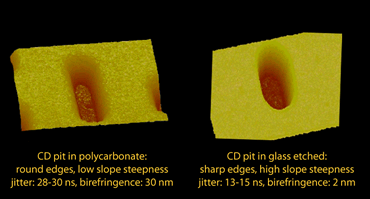 In the pre-mastering phase, when the company SDG digital audio master, the obligatory DDP (Disc Description Protocol)-Image File undergo conversion, which in this distortion and low noise levels is carried out jitter SDG special-purpose computer.Then, for glass mastering the encoder to the EFM (Eight to Fourteen Modulation) for CD, DVD or ETM (Eight to Twelve Modulation) for Blu-ray Disc converted signal is filtered again, then written into the laser beam recorder on glass illuminated (Calcined ). The electronics for signal conversion and laser control technology is also SDG-master is burned to the signals in the form of an ultra-clean square wave signal on the glass. Then the metallized glass master is developed and galvanized.
In the pre-mastering phase, when the company SDG digital audio master, the obligatory DDP (Disc Description Protocol)-Image File undergo conversion, which in this distortion and low noise levels is carried out jitter SDG special-purpose computer.Then, for glass mastering the encoder to the EFM (Eight to Fourteen Modulation) for CD, DVD or ETM (Eight to Twelve Modulation) for Blu-ray Disc converted signal is filtered again, then written into the laser beam recorder on glass illuminated (Calcined ). The electronics for signal conversion and laser control technology is also SDG-master is burned to the signals in the form of an ultra-clean square wave signal on the glass. Then the metallized glass master is developed and galvanized.
Recently it has become possible with direct-to-Glass mastering by our mastering facility produced extremely clean signal to implement physically.
With the directly into the tempered glass discs etched pits, it is possible to produce grown in the pits for the optimal sampling rectangular shape. Thus the benefits of technology come with sharp edges and high slope even better coverage. The laser light reaches the photodiode steeper slopes in the output signal.
The pit structure achieved with this technology is so clean that the player can read them without a reflective layer. Only the intensity of the laser needs to be readjusted, what most players are able to do for themselves. This is especially important for long-term archiving, which can be dispensed by the reflective layer and the protective lacquer. So we can just use the glass discs. Of course, the gold-coated "traditional version is" still to choose from.
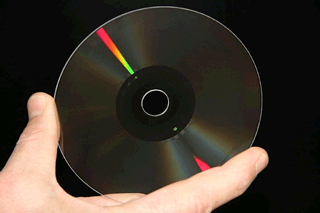 This product is the first and only media in the world, who holds up forever, "as carved into the stone."All magnetic data storage systems such as hard disks and magnetic tapes can be compared to our solution only for temporary use will be considered suitable. Most only as a backup but not as long-term archiving.
This product is the first and only media in the world, who holds up forever, "as carved into the stone."All magnetic data storage systems such as hard disks and magnetic tapes can be compared to our solution only for temporary use will be considered suitable. Most only as a backup but not as long-term archiving.
Therefore, globally, many libraries, computer centres, state and provincial archives, radio and television stations on our glass discs especially happy. The vast archives of film, video, tape or microfilm records and archives can be replaced with an unlimited durable medium, certainly saved.
Gone are the days when you had to just copy everything over again, where a fire, water or electricity damage could destroy valuable documents. Our glass discs must be done only once and accessibility, network or broadcast capability, and forgery are secured forever.
A medium is the passive, requires no maintenance, no electricity, or cooling, heat, cold, acid resistant, and completely without costs.
In the manufacture of the stamper, the feedback and requests for fine-tuning and optimisation are widely considered the in tandem working Pressing Plant companies KSP and NOD. There are then ready pressed onto disks, printed and undergo a final quality control. The discs are now meeting our quality requirements, will be packaged and delivered to the client.
It does not matter what technique is used for recording from analog tube technology to purist R2R PCM, high-resolution multibit sigma-delta, or DSD, from 2 channel to multi-channel.
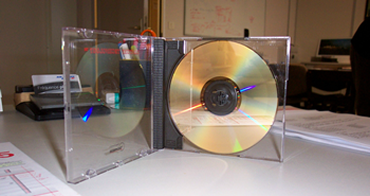 The recordings are, however, in all CD players in plain stereo, without additional electronics, decoding, or any other restriction be playable. We ask in addition to the recordings (on CD-R or DVD-R) to send information about the use of technology, equipment and methods. Reason: Our SDG-master technique allows a very transparent sound with low distortion. This is also the disadvantages of possibly exaggerated corrections strongly audible. Since the consultation will be necessary. Consumer abuses that restrict the user, injure, or spy, we reject categorically.
The recordings are, however, in all CD players in plain stereo, without additional electronics, decoding, or any other restriction be playable. We ask in addition to the recordings (on CD-R or DVD-R) to send information about the use of technology, equipment and methods. Reason: Our SDG-master technique allows a very transparent sound with low distortion. This is also the disadvantages of possibly exaggerated corrections strongly audible. Since the consultation will be necessary. Consumer abuses that restrict the user, injure, or spy, we reject categorically.
With the directly into the tempered glass discs etched pits, it is possible to produce grown in the pits for the optimal sampling rectangular shape. Thus the benefits of technology come with sharp edges and high slope even better coverage. The laser light reaches the photodiode steeper slopes in the output signal.
The pit structure achieved with this technology is so clean that the player can read them without a reflective layer. Only the intensity of the laser needs to be readjusted, what most players are able to do for themselves. This is especially important for long-term archiving, which can be dispensed by the reflective layer and the protective lacquer. So we can just use the glass discs. Of course, the gold-coated "traditional version is" still to choose from.
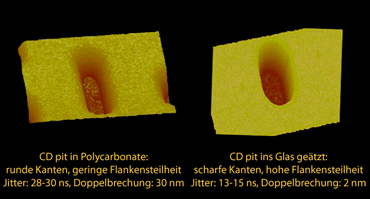 This product is the first and only media in the world, who holds up forever, "as carved into the stone."All magnetic data storage systems such as hard disks and magnetic tapes can be compared to our solution only for temporary use will be considered suitable. Most only as a backup but not as long-term archiving.
This product is the first and only media in the world, who holds up forever, "as carved into the stone."All magnetic data storage systems such as hard disks and magnetic tapes can be compared to our solution only for temporary use will be considered suitable. Most only as a backup but not as long-term archiving.
Therefore, globally, many libraries, computer centres, state and provincial archives, radio and television stations on our glass discs especially happy. The vast archives of film, video, tape or microfilm records and archives can be replaced with an unlimited durable medium, certainly saved.
Gone are the days when you had to just copy everything over again, where a fire, water or electricity damage could destroy valuable documents. Our glass discs must be done only once and accessibility, network or broadcast capability, and forgery are secured forever.
A medium is the passive, requires no maintenance, no electricity, or cooling, heat, cold, acid resistant, and completely without costs.
With our program for long-term archiving, we want to connect us to the nestor competence network for digital preservation, IASA and FIAT/IFTA.
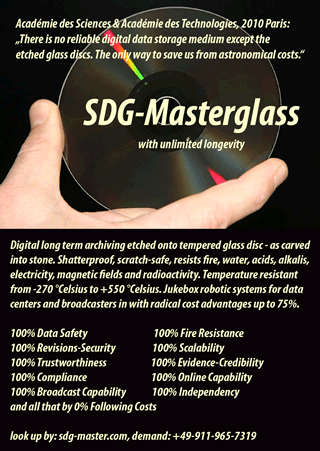 Long-term archiving with SDG-Master Glass archiving system ensures:
Long-term archiving with SDG-Master Glass archiving system ensures:
We offer our products for long-term archiving in uncompromising quality.
Technical details about the combination of two technologies:
By SDG mastering it is about extremely noiseless and distortion-free signals in mastering digital audio and video data in the mastering equipment, as well as the laser control of the glass mastering facility.
The glass discs are made of tempered glass with direct-to-glass mastering and plasma etching. The individual pits over conventional technologies have sharp edges and a high slope. In addition, we are introducing a unique technology, the pits in a rectangular shape.
To these new features comes the low birefringence index of the glass from 2 nanometres compared to 30 nanometres of the polycarbonate. All together it gives a very clean and clear pit structure to allow the glass discs alone, are played without a reflective layer!
The course will benefit in the long-term archiving. Those discs, the reflective layer have to be able to meet we always made of gold) for the purpose of long-term preservation really for eternity, the mandatory protective coating produced by us are made of inorganic specialty materials.
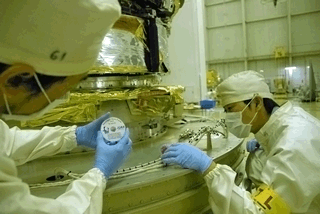 It is about glass discs, where the pits are etched in the tempered glass. This means unbreakability, scratch resistance. If you fall our glass disc, nothing happens.
It is about glass discs, where the pits are etched in the tempered glass. This means unbreakability, scratch resistance. If you fall our glass disc, nothing happens.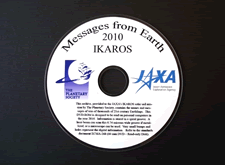 Another special feature is that we have developed a technology with rectangular pits which once again doubled the reader security. Therefore - if we want - can be omitted even the reflective layer.
Another special feature is that we have developed a technology with rectangular pits which once again doubled the reader security. Therefore - if we want - can be omitted even the reflective layer.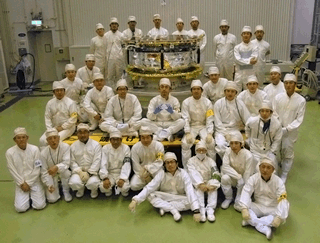 The discs were already as "Message from the Earth" with the NASA Mars probe "Pathfinder" and associated with the "Phoenix" spacecraft on Mars, where it stand keeps the local weather conditions on the outer skin of the Marsmobils in open space. This year our SDG Masterglass flies reference probe of the Japan Aerospace Exploration Agency "IKAROS" and "Akatsuki" into space toward Venus.
The discs were already as "Message from the Earth" with the NASA Mars probe "Pathfinder" and associated with the "Phoenix" spacecraft on Mars, where it stand keeps the local weather conditions on the outer skin of the Marsmobils in open space. This year our SDG Masterglass flies reference probe of the Japan Aerospace Exploration Agency "IKAROS" and "Akatsuki" into space toward Venus.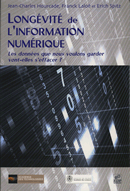 |
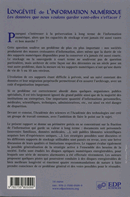 |
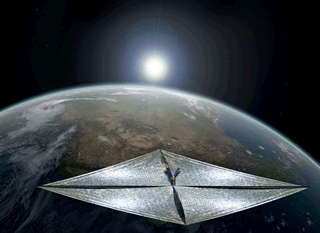 Power and database software are identical to the versions in known use no conversion necessary.
Power and database software are identical to the versions in known use no conversion necessary.
Readability without drives |
|
Common question, what if it in 100-500 years no longer have optical drives? Now this image shows how a HD disc with high-resolution scanner to be read without rotation. This property is unique, no other digital media can imitate. |
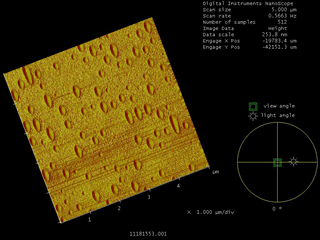 |
| The glass discs were used first in 1996 by NASA for the Mars Pathfinder, to store information on our terrestrial civilization at each target foreigners. The next NASA Mars Expedition Phoenix in 2007 also had Glass Disc here. The same process in the next Japanese space mission "Ikaros" in 2010 where the glass disc is used. | |
|
Etched glass DVD with Phoenix with 250,000 names (including all Planetary Society Members) on the Mars Reference Customers: Lockheed Martin, Thomson / Thalesgroup, NASA, Bibliothéque nationale de France, EDF, France Telecom, Musée Rodin, Avantis… |
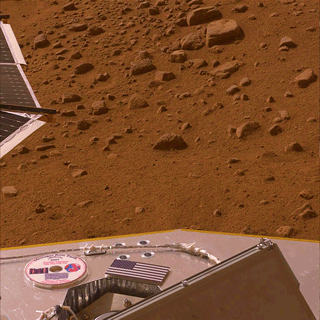 |
SDG-Master Glass is the first storage medium with unlimited shelf life, so the only usable for real long-term archiving, while all the other technologies simply work as a sequential backup. All previous studies, recommendations for regulations and standards were so far out of sequential backup. All workflow ('workfow') rules anticipate 'life cycles', that involve risks and subsequent costs. For the comparison between the sequential backup and long-term archiving, we take "Risk management in digital preservation" of Digital Preservation Coalition, DPC as a base, with some additions. These risks and how effective their management is to determine and define a long list - indeed all - of activities that the long-term conservation depends.
If we compare which of these risks have an impact on the two preservation methods of digital data. |
||
| Risk | Sequential backup on magnetic tape archive system |
Long-term archiving on SDG-Masterglass archive system |
| Media obsolescence | risk exists | no such risk |
| Media degradation (also known as 'bit rot') | risk exists | no such risk |
| Data loss due to major fire | risk exists | no such risk |
| Data loss due to water damage | risk exists | no such risk |
| Data loss due to radioactive radiation | risk exists | no such risk |
| Data loss due to failure of air conditioning | risk exists | no such risk |
| Data loss due to magnetic fields (transformers, power supply) | risk exists | no such risk |
| Data loss due to electrical malfunction, power failure, overload | risk exists | no such risk |
| Data loss due to viruses, Trojan (also known as malware) | risk exists | no such risk |
| Data loss from hacker attacks, cyber-war | risk exists | no such risk |
| Data loss caused by acids, alkalis | risk exists | no such risk |
| File format obsolescence | risk exists | no such risk |
Access barriers: eg encryption |
risk exists | no such risk |
| Insufficient resource discovery metadata | risk exists | no such risk |
| Insufficient representative metadata | risk exists | no such risk |
Inadequate control e.g. Copyright |
risk exists | no such risk |
| Authenticity and origin is unclear | risk exists | no such risk |
| Multiple copies are not synchronized | risk exists | no such risk |
| Disruptive technologies | risk exists | no such risk |
| Risk factor data loss: technical dependence on manufacturers | risk exists | no such risk |
| Risk factor data loss: financial dependence on manufacturers | risk exists | no such risk |
The time required to restore the system after a crash |
|
| Magnetic tape archive systems: | SDG-Masterglass archiv system: |
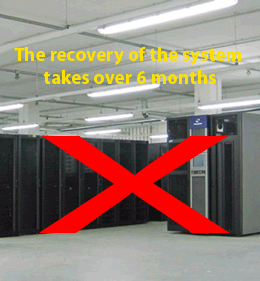 |
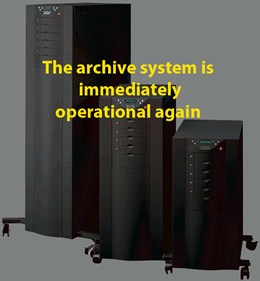 |
| The recovery of the system takes over 6 months | The archive system is immediately operational again. |
Investment costs for sequential backup and long term archiving in comparison |
||
| Investment | sequential backup with magnetic tape archive systems | Long-term archiving with SDG-Masterglass Archive System |
| Archiv inventory on data carrier | Yes | Yes |
| Security copy of the archive | Yes | Yes |
| Hardware for's archive | Yes | Yes |
| Hardware for the security copies | Yes | — |
| Air conditioner for the archive stock | Yes | — |
| Air conditioner for the security copies | Yes | — |
| special fire protection equipment (argon-flooding system) for the archive stock | Yes | — |
| special fire protection equipment (argon-flooding system) for the security copies | Yes | — |
| Special construction, to allow fire protection and air conditioning (Lampertz cell) for the archive stock | Yes | — |
| Special construction, to allow fire protection and air conditioning (Lampertz cell) for the security copies | Yes | — |
The time required to restore the system after a crash |
|
| Magnetic tape archive systems: | SDG-Masterglass archiv system: |
 |
 |
| The recovery of the system takes over 6 months | The archive system is immediately operational again. |
Operational and consequential costs for sequential backup and long term archiving in comparison |
||
| Operational and consequential costs | sequential backup with magnetic tape archive systems | Long-term archiving with SDG-Masterglass Archive System |
| Energy cost of the use of the archive | Yes | Yes |
| Personnel costs of the archive stock | Yes | Yes |
| Personnel costs of the security copies | Yes | — |
| Energy cost of air conditioning of the archive | Yes | — |
| Energy cost of air conditioning Security copies | Yes | — |
| Energy cost of the regular rewinding of the archive | Yes | — |
| Energy cost of the regular rewinding of the security copies | Yes | — |
| Energy cost of regular check of the data integrity of the archive | Yes | — |
| Energy cost of regular check of the data integrity of the security copies | Yes | — |
| Energy cost of the regular virus scan of the archive | Yes | — |
| Energy cost of the regular virus scan of the security copies | Yes | — |
| Change of generations (new purchase) of the storage media of the archive in every 3 years | Yes | — |
| Change of generations (new purchase) of the storage media of the security copies in every 3 years | Yes | — |
| Change of generations (new purchase) of the hardware of the archive in every 5 years | Yes | — |
| Change of generations (new purchase) of the hardware of the security copies in every 5 years | Yes | — |
| Energy costs of the copying of the archive in every 3 years | Yes | — |
| Energy costs of the copying of the security copies in every 3 years | Yes | — |
| Libraries: books, documents, files, periodicals, microfilm archives, photo archives | Digitization (scanning), digital image editing, cataloging | |
| Banking, Insurance: files, databases, on paper, magnetic tapes, disks | Digitization, cataloging | |
| Film archives: films and documentaries, film reports, collections on film, magnetic tapes, disks | Digitization, digital imaging, bug fixes, enhanced resolution. Image audio and video forensics, cataloging | |
| Music publishers: whether digital or analog music recordings, tapes, hard drives, optical discs | Digitization, digital sound processing with extremely high signal quality, higher resolution. Audio Forensics, cataloging | |
| Radio stations: tape recordings of music and prose, broadcasts, programs | Digitization, digital imaging, bug fixes, enhanced resolution. Image audio and video forensics, cataloging | |
| TV companies: Program and broadcast archives on film, magnetic tapes, hard drives, optical discs | Digitization, digital imaging, bug fixes, enhanced resolution. Image audio and video forensics, cataloging | |
| Universities, colleges and research institutes: University Libraries, measurement data, research, professional literature on paper, photographs, microfilm, magnetic tape, hard disk | Digitization (scanning), digital image editing, cataloging |
Network capability with short access times through automated jukebox systems.
Programmable Broadcast-Enabled Jukebox automated systems with fast access.
The automated jukebox systems are infinitely scalable.